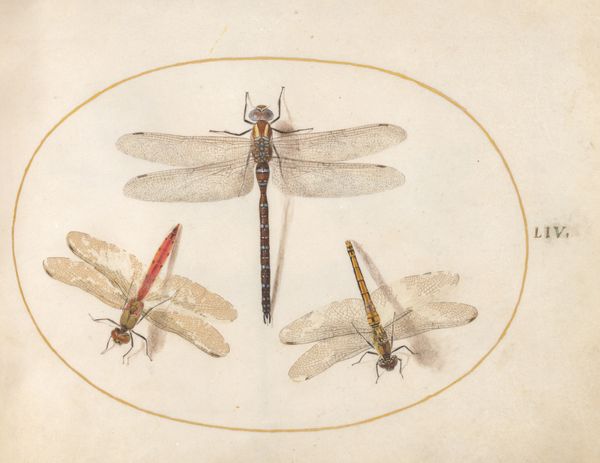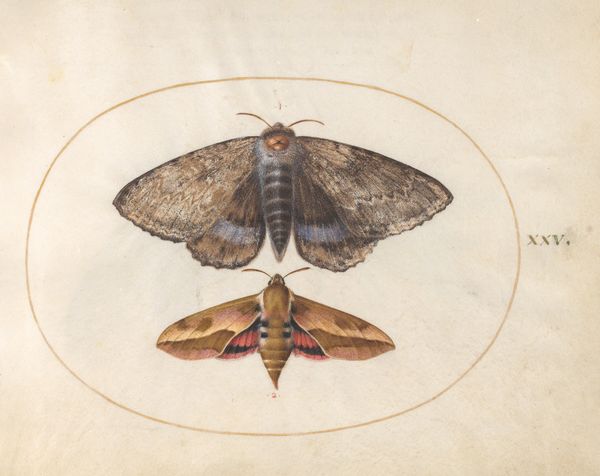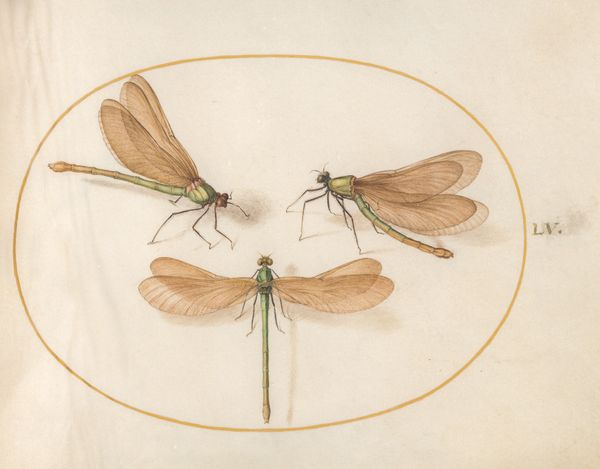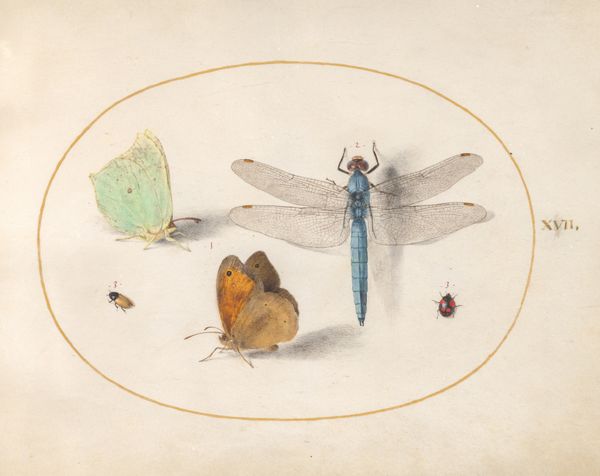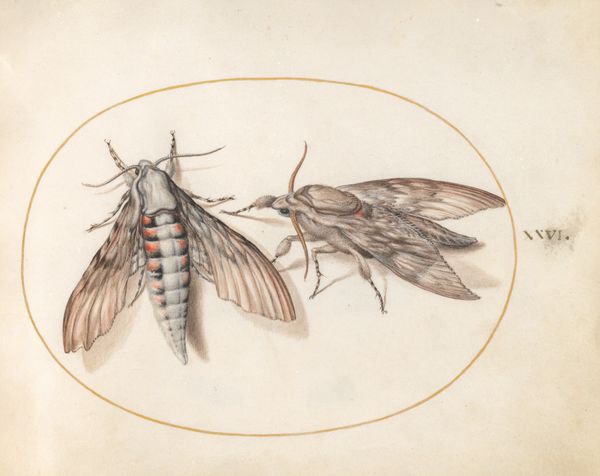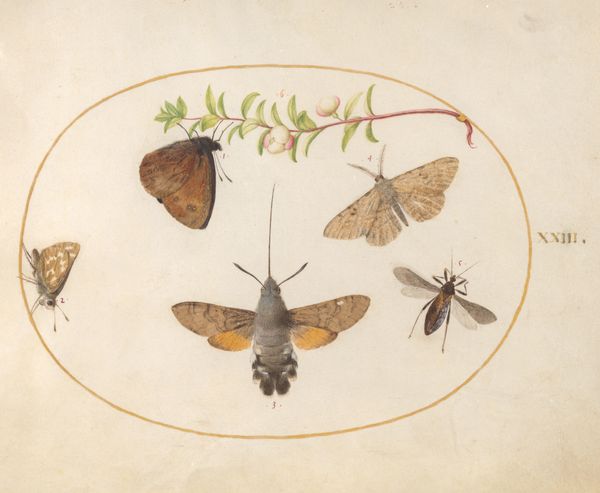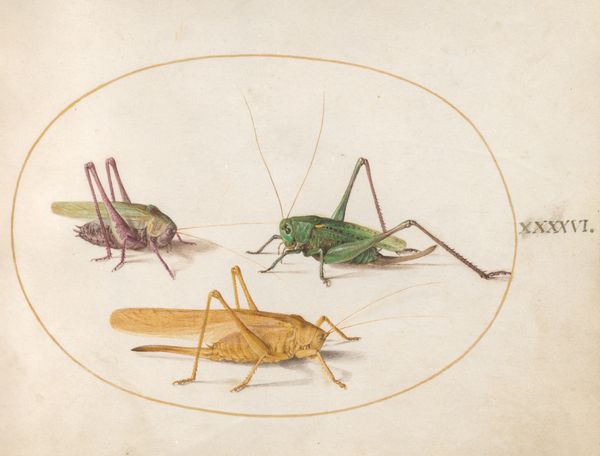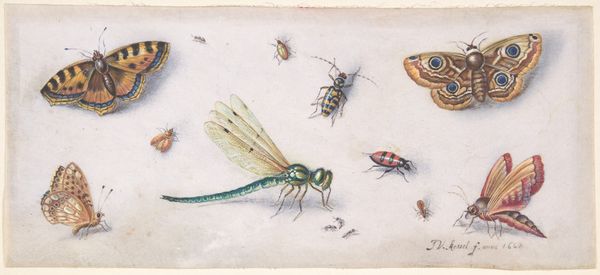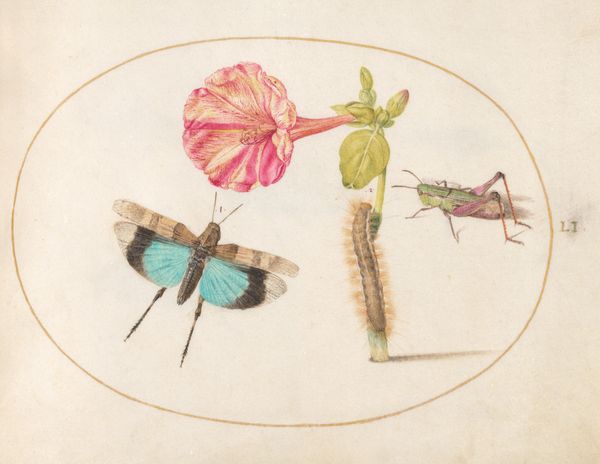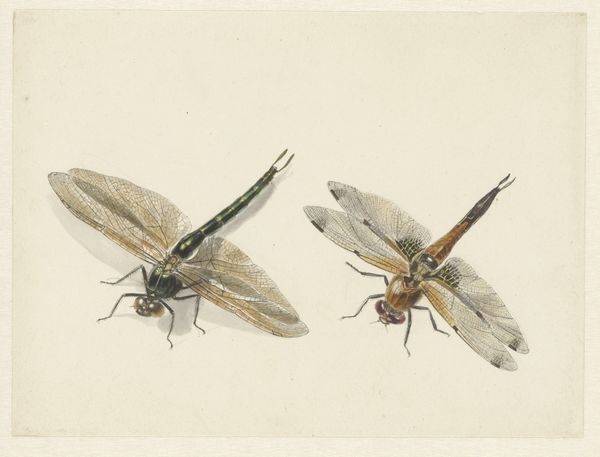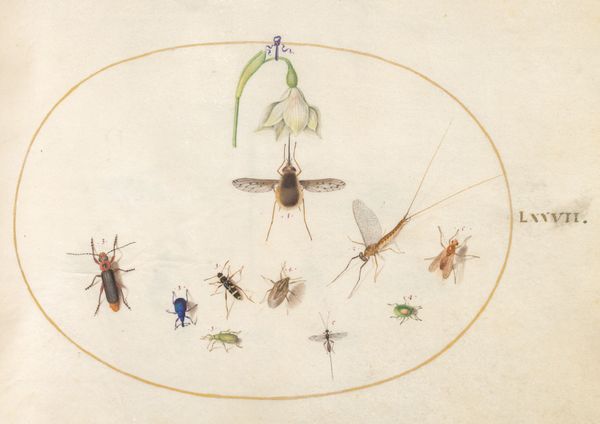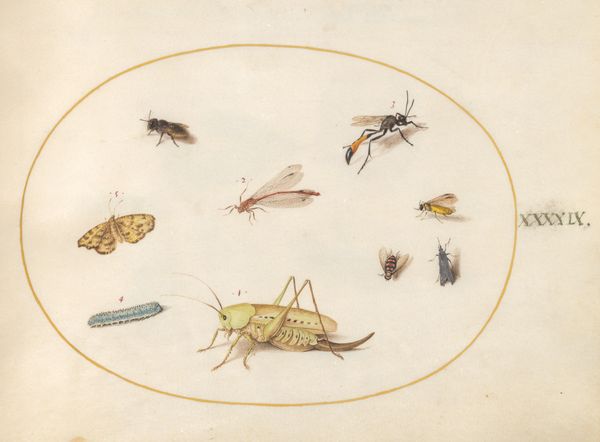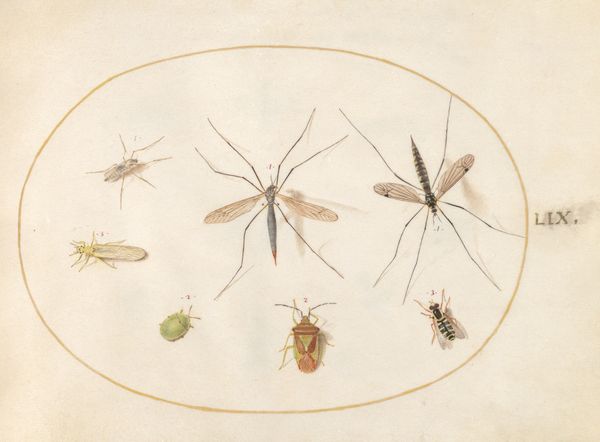
drawing, coloured-pencil, watercolor
#
drawing
#
coloured-pencil
#
figuration
#
11_renaissance
#
watercolor
#
coloured pencil
#
watercolour illustration
#
northern-renaissance
#
miniature
Dimensions: page size (approximate): 14.3 x 18.4 cm (5 5/8 x 7 1/4 in.)
Copyright: National Gallery of Art: CC0 1.0
Curator: At first glance, it presents almost a specimen, doesn't it? Precise, a little cold. Editor: Perhaps, but it's exquisitely rendered! I can practically feel the transparency of those wings. There’s real skill involved here, and it immediately invites us to contemplate the methods employed to arrive at this naturalistic representation. Curator: Indeed. What we're viewing is Joris Hoefnagel's "Plate 53: Southern Hawker Dragonfly", made around 1575-1580. Hoefnagel worked primarily with watercolour and colored pencil, evident in the delicate layers used to create this illusion. This particular plate is incredibly intriguing as it seems to borrow from the symbolic weight we give to insects—their ability to signify transformation or vulnerability. Editor: Thinking about material process here—the thin washes of watercolor, painstakingly applied. What was the availability of these colored pigments in the late 16th century? Who had access? We are clearly observing fine craftsmanship. The use of this medium to meticulously reproduce every tiny vein on each wing suggests something about the commissioning of the work too, or its place in the economy. Curator: You raise interesting questions. Dragonflies, since ancient times, appear across cultures as symbols of illusion, change, and the ephemeral nature of life itself. Its inclusion could speak to mortality or metamorphosis depending on where it's presented. Editor: Yet it strikes me also that insects as material agents weren’t always neatly symbolic either; beyond that, I wonder about how the consumption and disposal of material products changed people’s relationships to objects or species that could be classified alongside other consumables. I see Hoefnagel participating in a burgeoning moment in history of visual observation. Curator: A powerful insight! And a point well-made, reflecting that perhaps art-making isn’t exclusively a mental project; what is so fascinating to consider are not only the psychological but material conditions that impact the visual legacies that objects create, which stay around far longer than artists who laboriously assembled them ever will. Editor: Quite. We could probably both go back and forth between image and object, between cultural code and production site, to analyze any other aspects here.
Comments
No comments
Be the first to comment and join the conversation on the ultimate creative platform.
